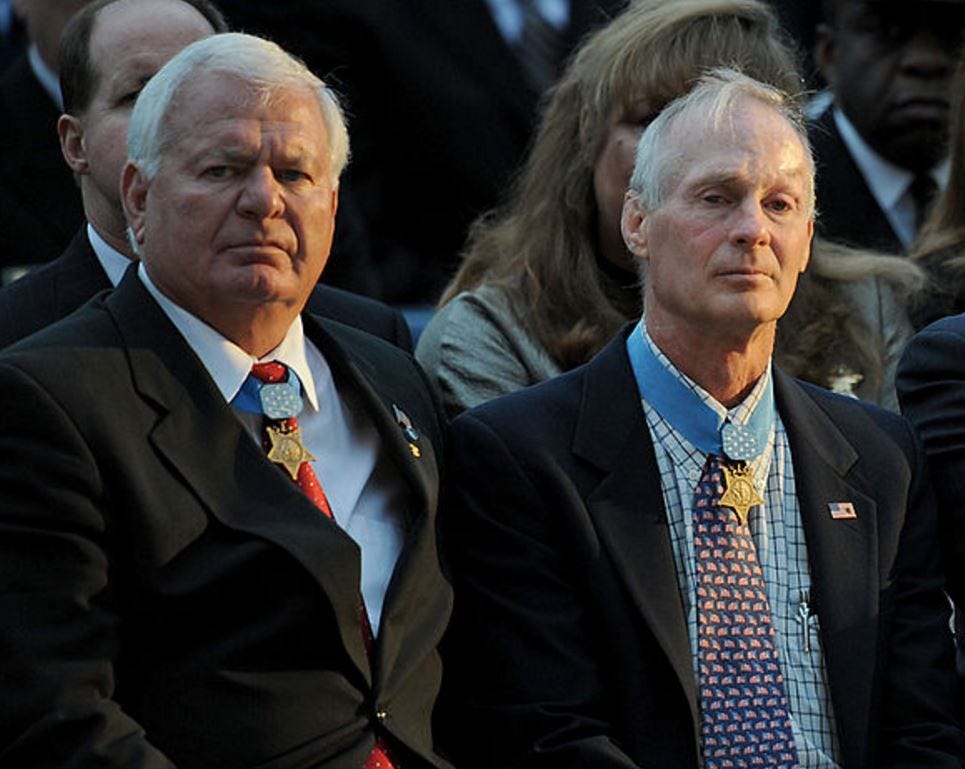Medal of Honor Monday: Tom Norris
Two U.S. Air Force airmen had been shot down behind enemy lines. It was Thomas R. Norris’s job to make sure that those men came home.
During this week in 1972, a Navy SEAL begins a multi-day rescue that would ultimately earn him the Medal of Honor. Two U.S. Air Force airmen had been shot down behind enemy lines. Making matters worse, one of the downed airmen knew critical information about U.S. capabilities.
It was Thomas R. Norris’s job to make sure that those men came home. They simply could not be captured.
Repeated attempts were made to rescue the airmen from the air, but it seemed impossible. More than 30,000 North Vietnamese soldiers were in the area. Multiple aircraft were lost and many people were killed before the air efforts finally ceased.
Norris and a team of LDNN (Vietnamese SEALs) were tasked with the mission. On April 10, a 5-man team departed, intending to physically locate Lt. Col. Gene Hambleton and Lt. Mark Clark on the ground. The airmen had been given rendezvous points, but Norris would otherwise have to get to them.
Norris found Clark first. He was hiding in the water, near a riverbank. Unsurprisingly, Clark didn’t trust anyone. Norris approached Clark carefully. “[I] just started talking to him,” Norris later explained, “And giving him information that he would be familiar with that the Vietnamese would have no way of knowing. And slowly trying to convince him that we were good guys and to come on out.”
They got Clark out. But Hambleton’s rescue would be tougher.
Just as Norris was getting ready to make a second trip out, his base was hit by mortars and rockets. He unfortunately lost much of his team.
By then, Norris had more information from a forward air controller, who had been in radio contact with Hambleton.
“This guy’s not making it,” the controller told Norris. “He’s not making his calls on a time schedule he’s supposed to. When he does call, he can’t talk. . . . He’s losing it. He’s giving up. He’s not making it.”
Norris knew he had to leave immediately. He and one final remaining Vietnamese disguised themselves as poor fishermen. They went paddling up a stream in a sampan, straight into the midst of the enemy.
The air controller had given Norris an approximate location on Hambleton. “[We] located him relatively quickly,” Norris later described. “That was very, very fortunate. I parked right about where he was sitting. That was luck.”
By then, the downed airman had been surviving on his own, behind enemy lines, for 11 days. He was dehydrated, hungry, and a bit of a mess. He kept trying to talk, even as Norris kept trying to keep him quiet! Norris worked to camouflage Hambleton, covering him with vegetation and hiding him in the bottom of the boat. They began to work their way back to base.
They made it partway back before coming under enemy fire. Norris called in air cover, which fortunately drove back the enemy. The trio finally made it back. The rescue had been long, expensive, and costly. But Norris had done it.
“I don’t feel that I was anybody special,” Norris later said of the Medal he received. “It was a time and a place and a mission that needed to be accomplished. And I was fortunate to be the one that was successful in that. I would like to think that somebody else in my position would have attempted to do the same thing.”
P.S. There is a postscript, of course. ;) Norris was seriously wounded in action about 6 months after all these events. He made it home only because of the efforts of his fellow SEAL, Michael Thornton. The picture is of Thornton (left) and Norris (right).
Sources can always be found on my website, here.





So thankful for heroes like this. God bless these men.
Courage under fire and humility after the fact!
Thank you so much for these stories, Tara!